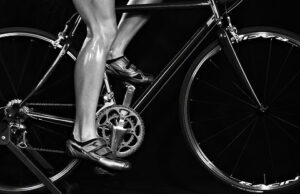TAVNS Effect On Exercise in Health Volunteers
Kristen Sparrow • April 16, 2025

 Nice, but small study showing that TAVNS at 100 Hz(?) improved exercise stress tests. No effect on Blood Pressure however, a bit surprising.
Nice, but small study showing that TAVNS at 100 Hz(?) improved exercise stress tests. No effect on Blood Pressure however, a bit surprising.
HRV exercise 4.16.2025 advpub_CR-24-0136
Effects of Transcutaneous Auricular Vagus Nerve Stimulation
on Hemodynamics and Autonomic Function During
Exercise Stress Tests in Healthy Volunteers
Yosuke Yoshida, PT; Satoshi Okayama, MD, PhD; Daisuke Fujihara, PT;
Midori Taniyama, PT; Ayami Yamada, PT; Megumi Fukui, OT;
Naoki Doi, PT; Runa Takahashi, PT; Akihiro Tanabe, OT; Shingo Ogaki, PT;
Satoharu Hattori, MD; Atsushi Iwai, MD; Michitaka Nakamura, MD;
Naofumi Doi, MD; Yoshihiko Saito, PhD, FJCS
Background: Transcutaneous auricular vagus nerve stimulation (taVNS) is a potential treatment for cardiovascular disease, but
data on its effects on physiological function during exercise are lacking. We investigated the effects of taVNS on hemodynamics and
autonomic nervous system function during exercise stress tests.
Methods and Results: Sixteen healthy volunteers underwent exercise stress tests with and without taVNS in this study, with a
randomized crossover design and with a washout period of at least 7 days. taVNS was set to a frequency of 100 Hz and maximum
current intensity without causing discomfort. Hemodynamics and autonomic nervous system function were evaluated using
plethysmography and heart rate (HR) variability, respectively. After exclusion of an outlier, data of 15 participants were analyzed. In
tests with taVNS, HR was significantly reduced at maximum exercise (136.0±9.7 vs. 132.0±9.2; P<0.001) and 1 min after exercise
(115.0±11.4 vs. 104.0±15.0; P<0.001), with minimal changes in blood pressure. The stroke volume and total peripheral resistance
at maximum exercise significantly increased and decreased, respectively. Furthermore, low/high frequency ratio reflecting sympathetic
dominance decreased at rest (3.7±2.5 vs. 1.6±1.3; P<0.001) and at maximum exercise (4.5±4.5 vs. 1.2±0.9; P<0.001).
Conclusions: taVNS can reduce HR with minimal effect on blood pressure by inducing parasympathetic dominance during exercise
stress tests.
Key Words: Heart rate variability; Neuromodulation; Parasympathetic nervous system; Sympathetic nervous system

